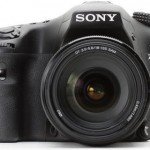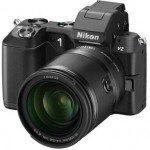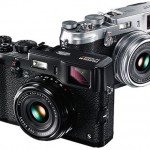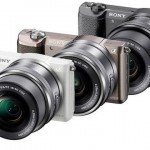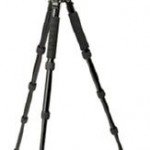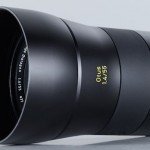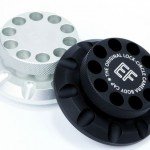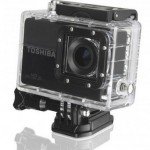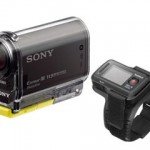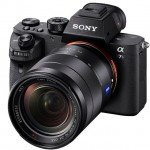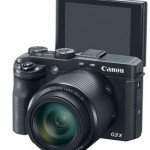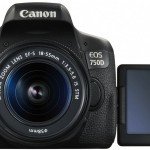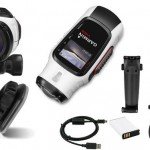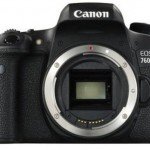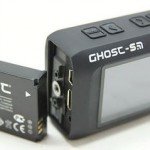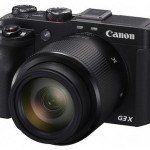Canon PowerShot G7 X
Canon PowerShot G7 X Review – Almost every G series camera in the past has done well, especially with serious photographers and professionals, because of three reasons… they were robustly built, had the essential features, and delivered good image quality. While this may not sound like much, getting this balancing act right is not something that all camera manufacturers managed to do well. The latest in the G series, the G7 X, is built around a completely new 1-inch CMOS sensor. Canon was last to enter the mirrorless camera segment, where they have been on the back foot.
Turning to 1-inch format is, decidedly, a wise move. A 1-inch sensor is significantly smaller than APS-C. Consequently, low light performance and resolutions also would be lower. Yet, it comes with the advantages of being much larger than regular compact camera sensors, and yet small enough to fit into a compact body.
Features

The obvious benefits of a screen that flips is not just for the selfie crowd, but also for including oneself in group shots with the camera set on a tripod.
Canon has positioned the new 20.2MP G7 X in between the PowerShot S120 (with a 1/1.7-inch 12.1MP compact camera sensor) and the G1 X Mark II (a larger 1.5-inch 14.3MP sensor). While the camera is much smaller than G1 X Mark II, it is the same size as its closest competitor, the Sony RX 100 III (also equipped with a 1-inch sensor). I was not surprised when Sony reduced the zoom range from 28-100mm in the RX100 II to 24-70mm in the RX100 III, in order to deliver a brighter maximum aperture of f/2.8 at the telephoto end. This made sense. However, I must admit that I was pleasantly surprised, and intrigued, to see that Canon managed to equip the G7 X with a 24-100mm f/1.8-2.8 lens. This not only delivers an increased reach of about 50% over the 24-70mm of the RX100 III, but also offers the same, efficient aperture range. The lens uses ultra high refractive index aspherical elements, and features a 9-bladed circular aperture diaphragm.
Like the RX100 III, the G7 X also has a tilting screen. However, to Canon’s advantage, it is touch-sensitive, allowing you reposition AF areas, enable touch-release and access functions through the screen. A good feature borrowed from G1 X Mark II, and also available in the RX100 Mark III, is its in-built Neutral Density (ND) filter. The 3-stop ND filter will allow you to shoot at much slower shutter speeds in bright conditions. A stand-out feature of the G7 X, over the Sony, is a manually controllable shutterspeed range of 1/2000sec to 250sec. Yes… this is no misprint! There are some restrictions in the use of extremely long shutter speeds though.
Up to 30 seconds, the G7 X necessitates using ISO 3200 or lower (the maximum ISO available is ISO 12,800). Between 40 and 250 seconds, you need to select the lowest ISO setting available… ISO 125. On the other hand, while both the G7 X and RX100 III are fully video capable (1920 x 1080 at 60P) for most practical video shooting scenarios, the RX100 III has a few additional video features like uncompressed HDMI ouput and XAVC S (50Mbps) and AVCHD 2.0 encoding.
Handling
Then GX 7 is a small, pocketable camera. In terms of design, the GX 7 resembles the PowerShot S120, rather than G series family (including the lack of a viewfinder). The body is superbly crafted in metal and feels sturdy. There is no handgrip, but a thumbrest on the back helps. While the buttons at the back seem to be cramped, in actual use, I had no accidental presses. On the top right is a double decker dial. The mode dial sits on the top of an exposure compensation dial. Both dials are within reach of the thumb and forefinger.
They both have different diameters and makes changing exposure quick and easy, even in the dark. I especially liked the large exposure compensation dial. Both dials offer enough resistance to ensure that they cannot be accidentally shifted. The 3-inch LCD on the back can be vertically articulated, and flips up to 180o for self-portraits. The LCD of the Sony RX100 III can be angled downward too, by about 45o, for shooting overhead shots. I did not think of this as a big disadvantage for the GX 7 though. All I had to do to shoot over people’s heads was to hold the GX 7 upside down and release the shutter with the thumb of my left hand.
On the negative front, the tripod socket is off-centre from the lens axis, which makes critical adjustments difficult in some cases (while shooting panoramas, for instance). When mounted on a tripod, changing the battery or the memory card is difficult. While I personally found the LCD perfectly adequate for almost every shooting situation, for professionals who are used to cameras with viewfinders, the lack of an EVF on the G7 X could be a drawback. This is a distinct advantage with the RX100 III.
Performance
Considering the relatively small size sensor, I found myself completely astonished by the image quality that the G7 X can produce, even at higher ISO settings. The fine details are excellent, even in the shadows. The colours are wonderfully crisp and tonal variation is beautifully controllable. The camera’s metering did a good job, irrespective of the difficult luminance levels. I could not have expected more. The lens complements the sensor rather well. As expected, it delivered its sharpest results in the middle of the aperture and zoom range. Corner sharpness is affected at the widest apertures, visibly so at both ends of the zoom.
There is no visible distortion in the images captured, although I think there would be some amount of in-camera correction. Control over flare is exceptionally good. There are slight, negligible traces of purple fringing in high contrast situations, visible only at 100%. The AF speed of the camera is good in normal light, but just about average in poor light. In terms of AF speed and accuracy, the G7 X cannot compete with other mirrorless cameras. The IS showed a commendable performance with slow shutterspeeds. I frequently found myself shooting at 1/8sec with a very good ratio of good shots to blurred ones.
The G7 X is power hungry. During the first few days of on-field testing, it was frustrating to run out of charge in the middle of a session. Later, I began to conserve my shots. I managed about 200 images per charge. It is good that Canon supplies the charger separately to charge spare batteries outside the camera.
Conclusion
Considering this is the company’s first use of a 1-inch sensor, I can say that the G7 X is a wholly respectable effort by Canon. The price tag of Rs 47,995/- places the camera between Sony’s older RX 100 II and RX100 III (which we also had with us at the time of testing the G7 X). The RX100 III has slightly faster AF, is marginally more responsive, has better video features, and has an EVF. However, the advantages of the G7 X are quite evident.
While the image quality with both cameras are comparable and are exceptionally good, the G7 X features a fast lens with a significantly bigger zoom range, a large shutterspeed range that can be hugely useful, excellent ergonomics, and fantastic build, for a lower price. If you are a purist looking for exceptional image quality, handling finesse, and can ignore the lack of a viewfinder, the Canon G7 X offers very good value great value.
Pros
- Image quality
- Fast lens
- Touch screen
Cons
- No viewfinder
- Average battery life
Canon PowerShot G7 X Specifications
- Model name Canon PowerShot G7 X
- MRP Rs 47,995/-
- Sensor size, type 1- inch, Canon high-sensitivity CMOS
- Effective pixels, Max image size 20.2 megapixels, 5472 x 3648 pixels
- LCD size 3-inch
- Lens Focal length 24-100mm (35mm equivalent)
- ISO range 125 – 12800
- Aperture range f/1.8 – f/16 (W), f/2.8 – 16 (T)
- Shutterspeed 40 – 1/2000 sec
- Metering modes Evaluative, Center-weighted average, Spot
- File formats Still: RAW, JPEG, Video: H.264
- Battery Lithium-Ion rechargeable battery
- Storage SD/SDHC/SDXC card
- Dimensions, weight 103 (W) x 60.4 (H) x 40.4 (D) camera only 279gm


